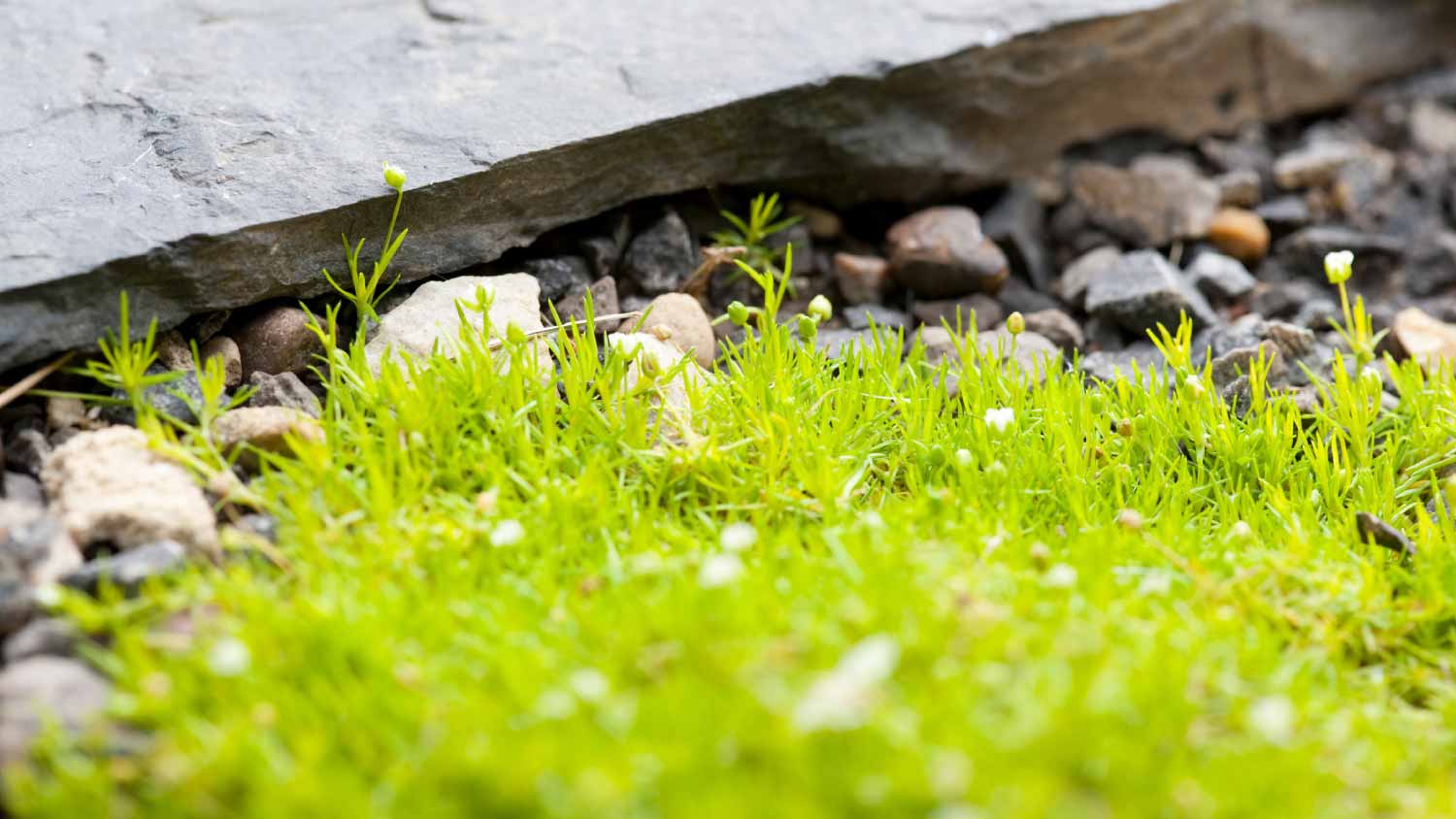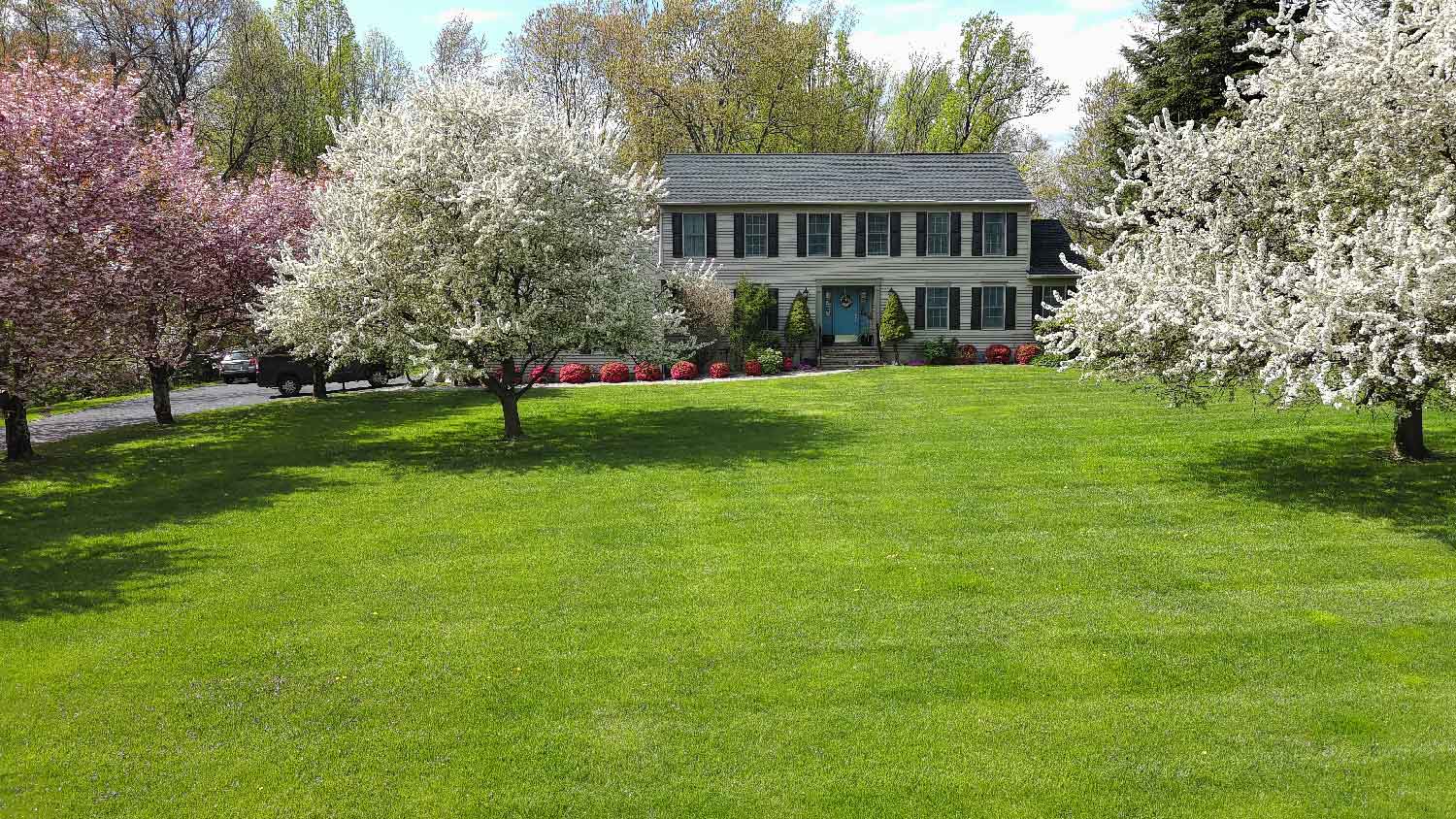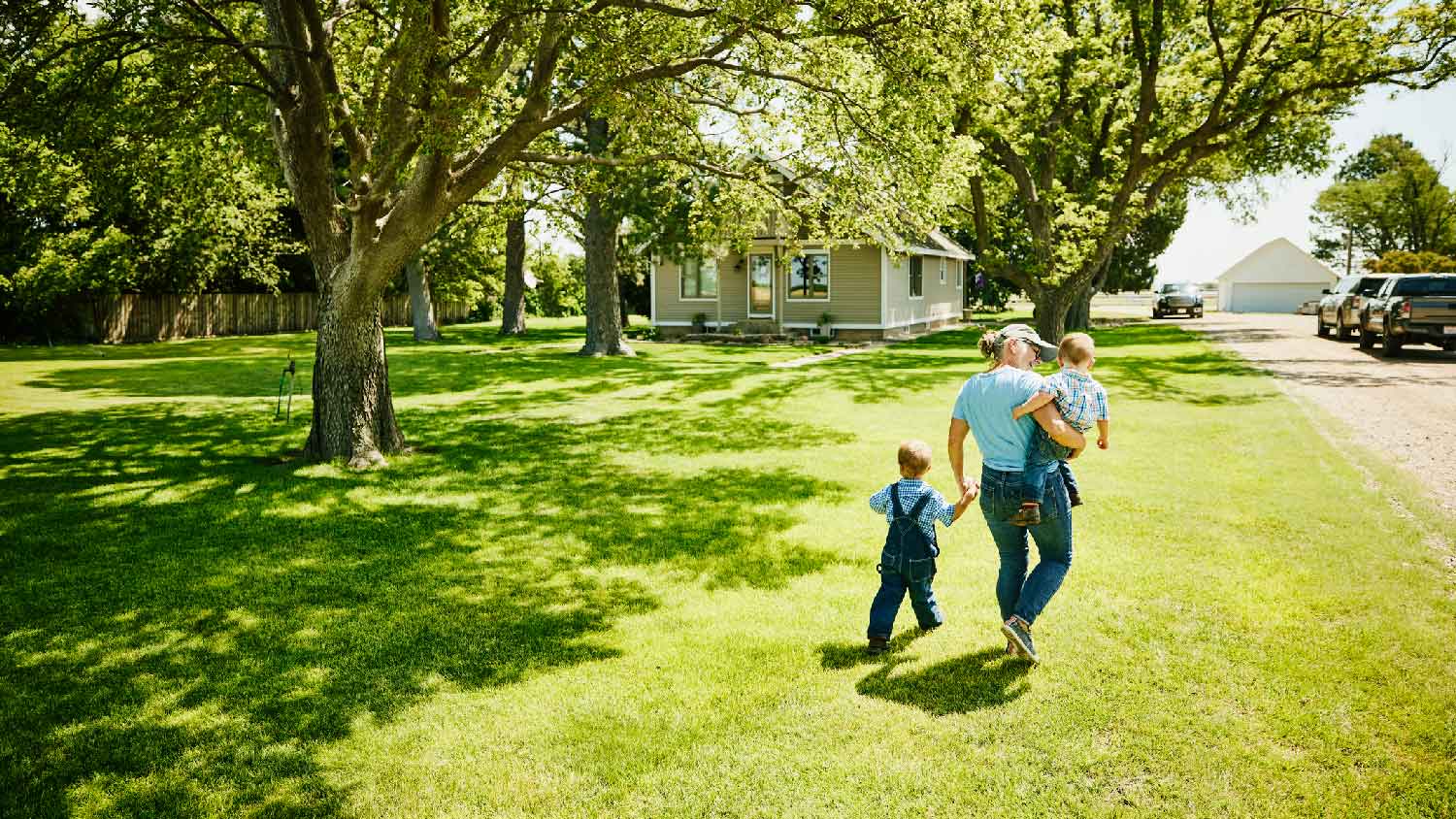7 Best Grasses for Sandy Soil
Here are the grasses to make you happy to bury your feet in the sand


Learning how to grow grass in sandy soil can take a bit of finesse, but it begins with choosing the right variety. Grass for sandy soil must be able to: thrive in lawns with rapid drainage, survive without abundant organic matter, and withstand the risk of erosion.
Additionally, it's important to pick grass variety for your USDA hardiness zone to keep your grass green in the changing seasons. Here are your top picks when choosing grass for sandy soils.
| Grass Species | Growing Zones |
|---|---|
| Bahiagrass | 7b–11 |
| Tall Fescue | 3–8 |
| St. Augustine Grass | 8–12 |
| Fine Fescue | 3–8 |
| Bermuda Grass | 5–10 |
| Perennial Ryegrass | 5–7 |
| Centipede Grass | 7–10 |
1. Bahia grass
Let's start with some grass for sandy soil that thrives in the warm and balmy southern regions of the country. Ideal for zones 7b through 11, bahia grass can hold up in a wide range of soil conditions, including sandy and loamy compositions. It doesn't mind soil with high acidity and can remain green in times of drought. While it's not the prettiest and softest grass, it is an affordable option for hot areas known for sandy soil brought in from the shores.
| Pros | Cons |
|---|---|
| Low-maintenance | Slow growth rate |
| Can handle direct sun | Patch appearance |
| Pest resistant | Low foot-traffic tolerance |
Best for: Lawns in Southern states with temperatures over 60 degrees Fahrenheit
2. Tall Fescue
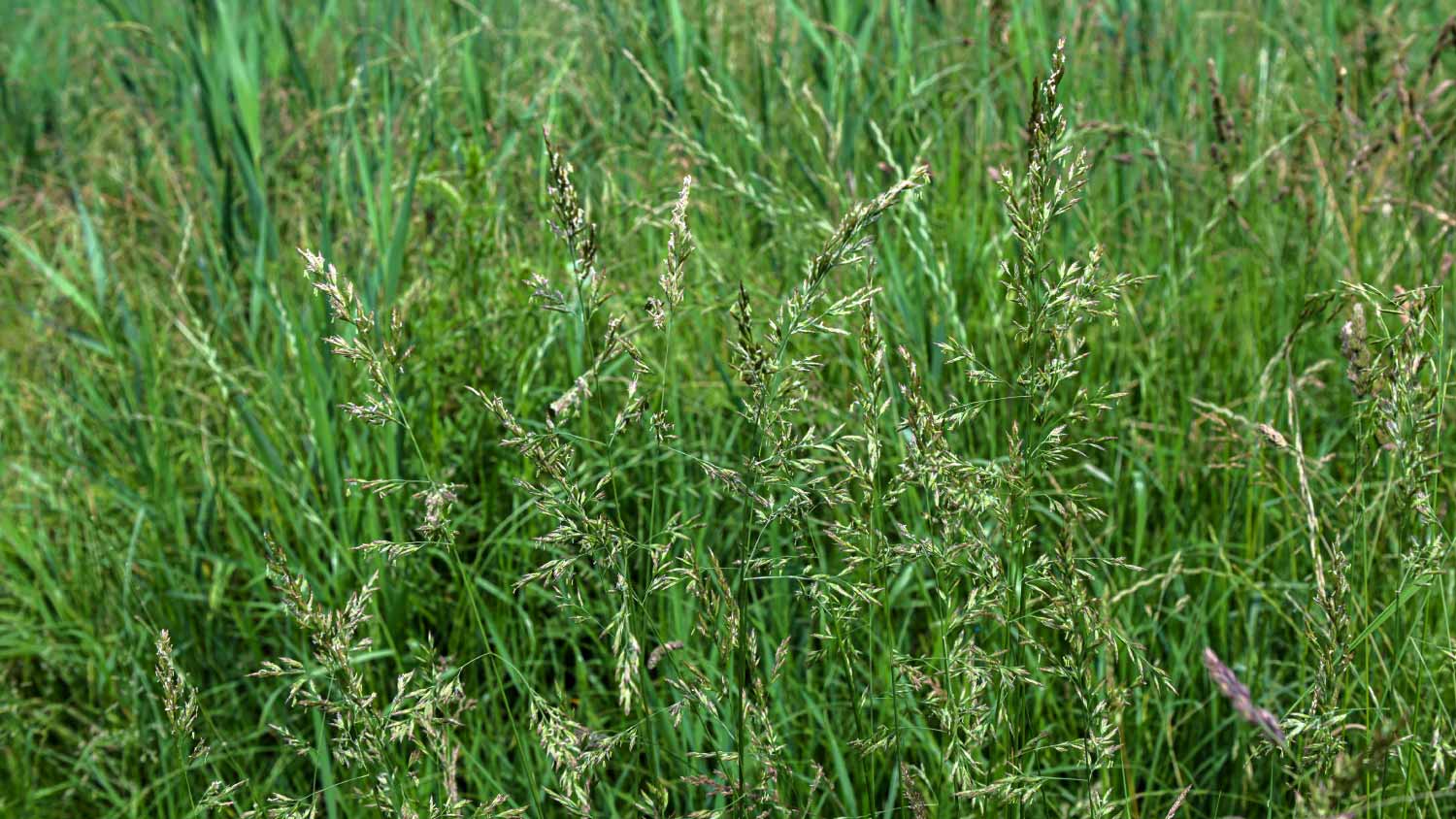
Sandy lawns also exist outside of the beachy south, including across northern and eastern seaboard states. Thankfully, one of the most popular cool-season grasses is happy in sandy soil. Tall fescue has deep roots that protect against erosion and survive in soil with high levels of drainage caused by sand. It can also thrive through the transitional zone of the country—down to zone 8.
| Pros | Cons |
|---|---|
| Deep roots for high drainage | Grows in clumps |
| Resistant to weeds | Often requires overseeding |
| Wide growing zone | Goes dormant in cold temperatures |
Best for: Lawns in Northern and central states with a mix of sun and shade
3. St. Augustine Grass
Homeowners in Florida, southern Texas, and along the Gulf Coast often turn to St. Augustine grass for its unique features. Not only is it an excellent grass for sandy soil, but it doesn't mind the salty groundwater either. Its density makes it strong against both erosion and weeds, though you will have to keep an eye on its moisture levels to avoid disease. Keep in mind that St. Augustine grass requires far more maintenance outside of its favorite hot zones, you'll end up paying more on lawn care costs if you plant it further north.
| Pros | Cons |
|---|---|
| High salt tolerance | Only thrives in hot climates |
| Weed-resistant | Low foot-traffic tolerance |
| Easy to propagate | Prone to disease |
Best for: Coastal states in the deep South

4. Fine Fescue
According to our recent American lawn survey, fescues top the list of one of the most popular types of grass across the country. Fine fescues are the tall, thin, and soft varieties within the fescue family, and many thrive in sandy soils. Depending on the species, you can also grow them in both northern and traditional zone lawns.
Fescues also commonly add nitrogen to soils, making it a great pick for sandy soils that struggle to retain nutrients. Additionally, homeowners seeking a low-mow option will enjoy the very slow speed at which many fine fescues grow.
| Pros | Cons |
|---|---|
| Soft and lush appearance | Susceptible to disease |
| Ideal for low-mow lawns | Low traffic tolerance |
| Rapid germination | Goes dormant in hot climates |
Best for: Low-maintenance lawns in the North and central states
5. Bermuda Grass
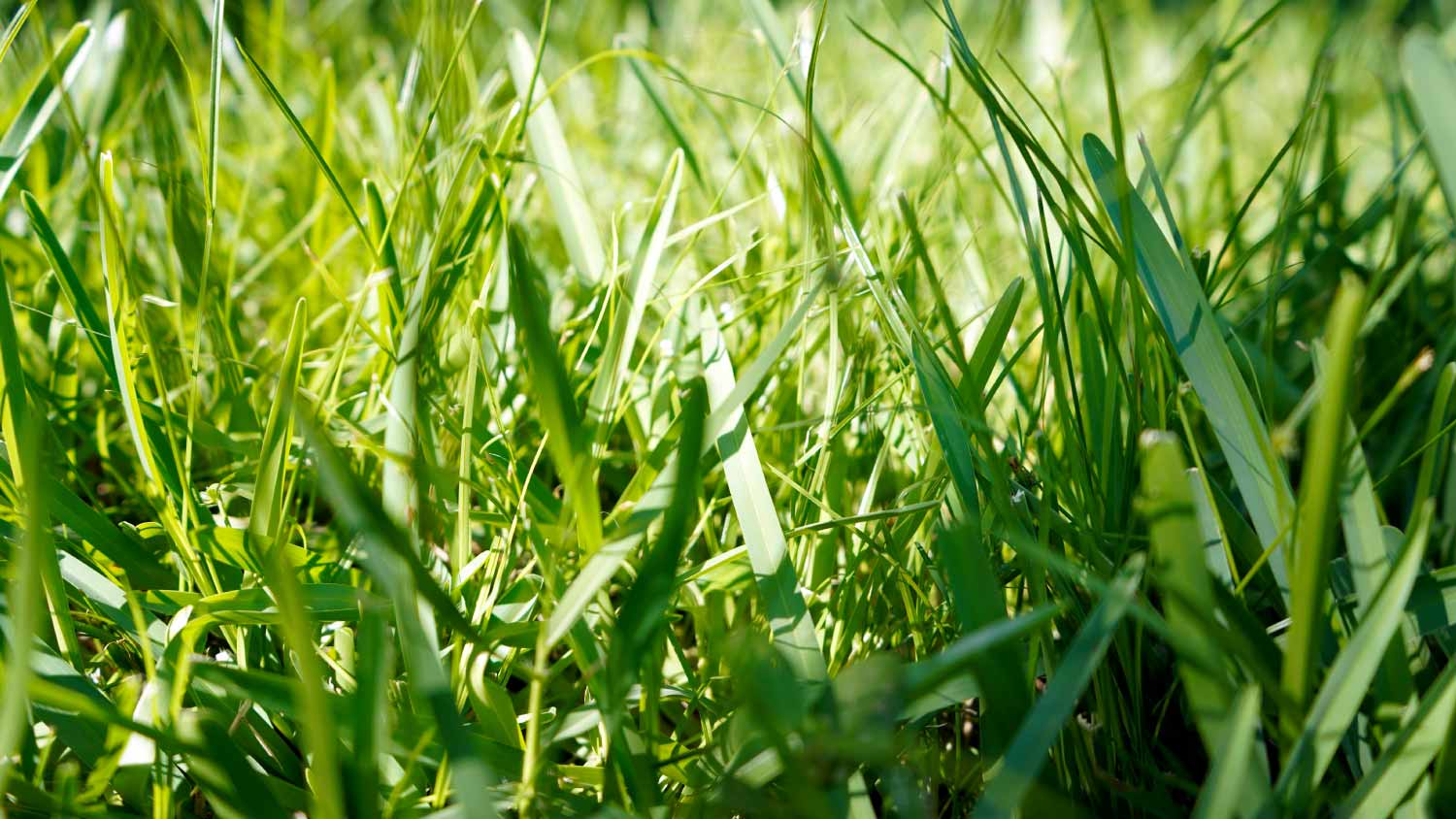
Bermuda grass has everything a homeowner could dream of when growing grass in sandy soil. Ideal for Southern states in zones 5 through 10, Bermuda grass doesn't mind foot traffic, high salt content, and drought. The grass also won't go dormant until the weather surpasses 100 degrees Fahrenheit—a rarity for even some warm-season grasses.
Keep in mind that Bermuda grass loves to spread, which can be both a pro and a con. You won't have to worry about empty patches common with sandy soil, but the grass can also overtake nearby flower beds when not contained.
| Pros | Cons |
|---|---|
| Ideal in salty conditions | Low shade tolerance |
| Establishes quickly | Can spread past your lawn |
| High heat tolerance | Won't thrive over zone 5 |
Best for: Southern lawns with direct sun and high soil salinity
6. Perennial Ryegrass
Those living in the transitional zones of the U.S., including the Pacific Northwest, can turn to perennial ryegrass for their sandy soils. As the name suggests, the type of grass comes back year after year with minimal maintenance and even acts as a great overseeding option for grasses that go dormant in the winter. Depending on the variety, perennial grass stands up against drought, heat, and cold snaps.
| Pros | Cons |
|---|---|
| Establishes quickly | Grows in clumps |
| Drought-tolerant | Requires sun or light shade |
| Ideal for transitional zones | Range of traits by species |
Best for: Transitional planting zones with moderate temperatures and sandy soils
7. Centipede Grass
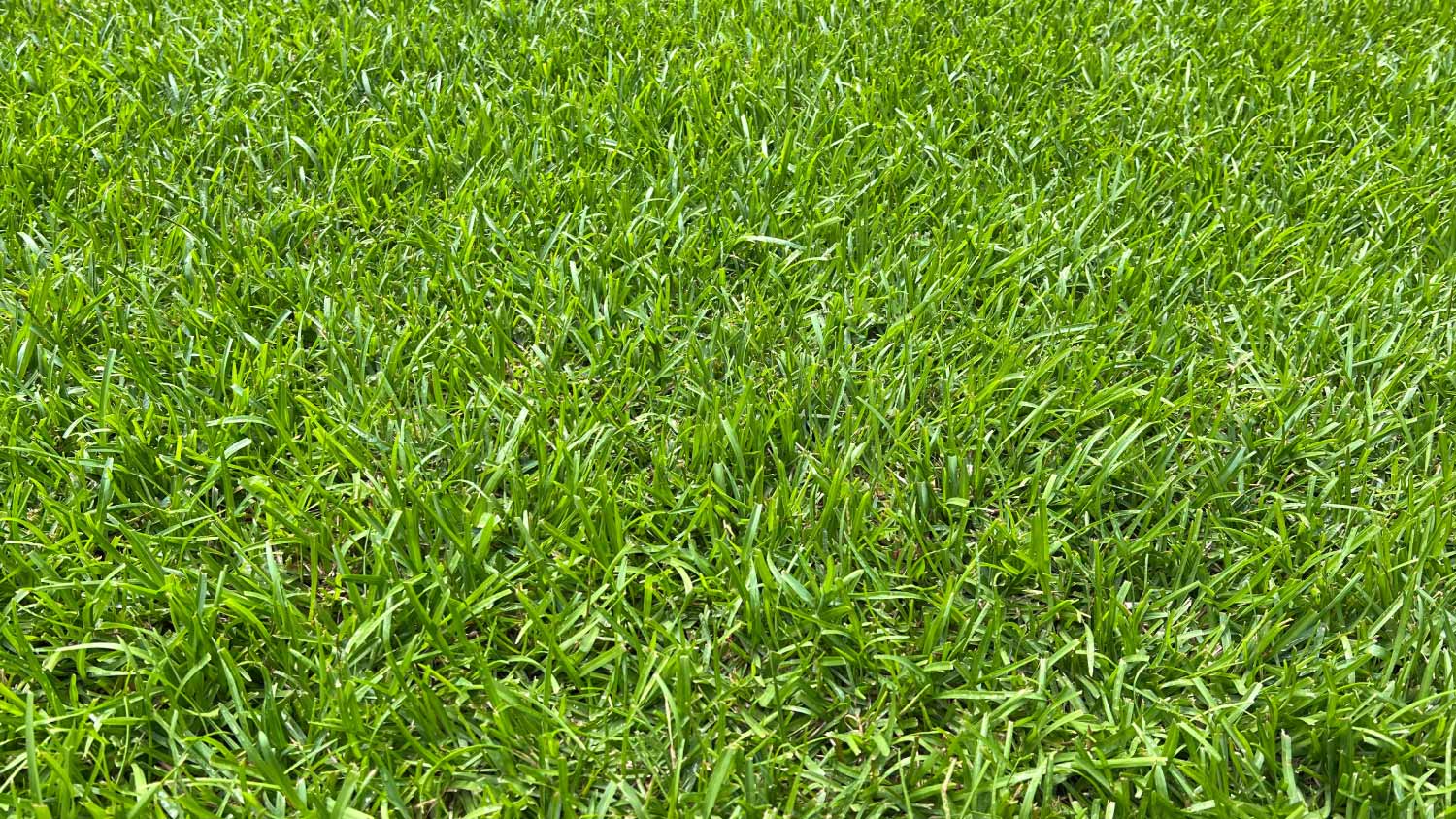
Despite its name, centipede grass (thankfully) has nothing to do with the creepy crawler. Instead, its spreading growth pattern simply resembles the multi-legged bug. Centipede grass is a great bet for homeowners with sand in their soil, but not necessarily ones with an extremely high sand content. With shallow roots compared to the others on this list, it doesn't love high traffic or drought but is incredibly easy to maintain. It stays lush in the winter and can tolerate very salty groundwater.
| Pros | Cons |
|---|---|
| Very low maintenance | Not traffic-tolerant |
| Tolerate high acidity | Prefers direct sun |
| Stays green in the winter | Shallow roots |
Best for: Combination soils in warm zones with direct sun



